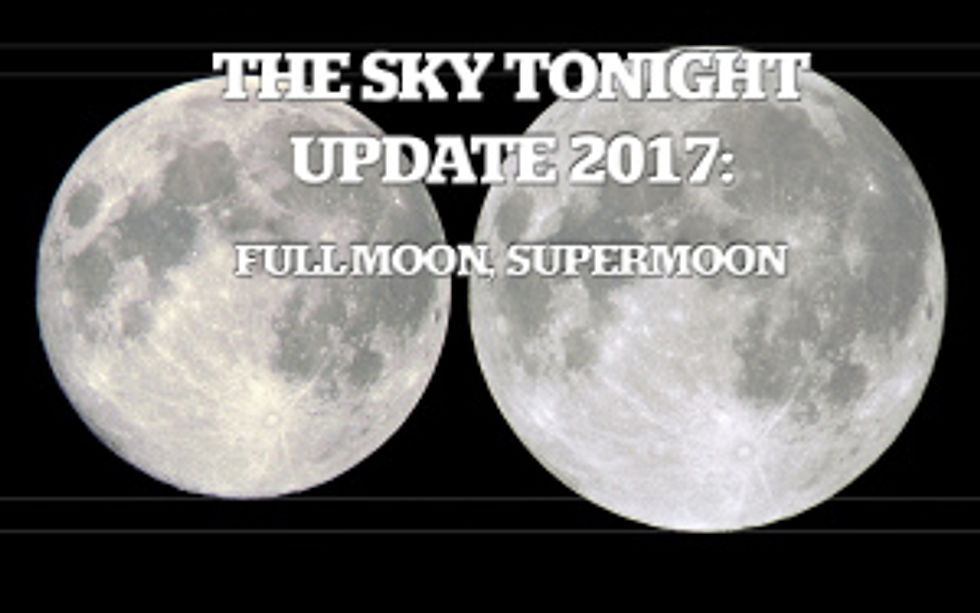The Sky Tonight Update: Dec. 3, Full Moon, Supermoon
- LASM

- Dec 3, 2017
- 2 min read

This December 3, the Moon will be located on the opposite side of the Earth as the Sun and its face will be will be fully illuminated. This phase occurs at 15:47 UTC. This full moon was known by early Native American tribes as the Full Cold Moon because this is the time of year when the cold winter air settles in and the nights become long and dark. This moon has also been known as the Full Long Nights Moon and the Moon Before Yule. This is also the only supermoon for 2017. The Moon will be at its closest approach to the Earth and may look slightly larger and brighter than usual.
At full moon, the moon and sun are on a line, with Earth in between. It’s as though Earth is the fulcrum of a seesaw, and the moon and sun are sitting on either end of the seesaw.
In many ways, a full moon is the opposite of a “new moon.” At both the new and full phases, the moon is on a line with the Earth and sun. At new moon, the moon is in the middle position along the line. At full moon, Earth is in the middle.
Full moon always comes about two weeks after new moon, when the moon is midway around in its orbit of Earth, as measured from one new moon to the next.
A full moon looks full because it’s opposite Earth from the sun, showing us its fully lighted hemisphere or day side.
What is a Supermoon?
A supermoon is a new or full moon closely coinciding with perigee – the moon’s closest point to Earth in its monthly orbit. An astrologer, Richard Nolle, coined the term supermoon over 30 years ago, but now many in astronomy use it as well.
What did astronomers call these moons before we called them supermoons?
They were known as perigee full moon or perigee new moon. Perigee means “near Earth.”




Comments